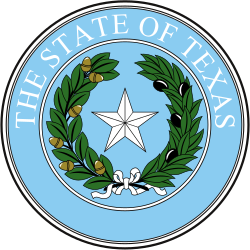Background
Democrats had controlled the Texas Senate since the 1872 elections. [1] The Legislature passed redistricting bills in 1981, but Republican governor Bill Clements vetoed the state Senate map. The Legislative Redistricting Board, made up entirely of Democrats, was then tasked with drawing the map for the chamber. Despite this partisan unanimity, stark divisions came about on the Board due to each member's own goals, ranging from incumbency protection to the expansion of minority representation. Several members' potential gubernatorial ambitions also underscored the debate. The Board eventually passed a map in a 4–1 vote, with Comptroller Bob Bullock dissenting. [2]
The Senate map passed by the Board was challenged by a lawsuit in Terrazas v. Clements. [3] Additionally, the Justice Department blocked both maps for violating the Voting Rights Act. These challenges were primarily focused on the map's alleged dilution of Hispanic representation. [4] The map maintained the presence of two districts, one in Houston and the other in Dallas, with substantial African American populations, as required by previous court rulings. [5] Given the imminence of the March primary, and a failed appeal to the U.S. Supreme Court, the courts allowed the map to be used for the 1982 elections. [6]
This page is based on this
Wikipedia article Text is available under the
CC BY-SA 4.0 license; additional terms may apply.
Images, videos and audio are available under their respective licenses.


